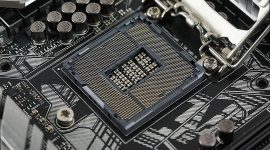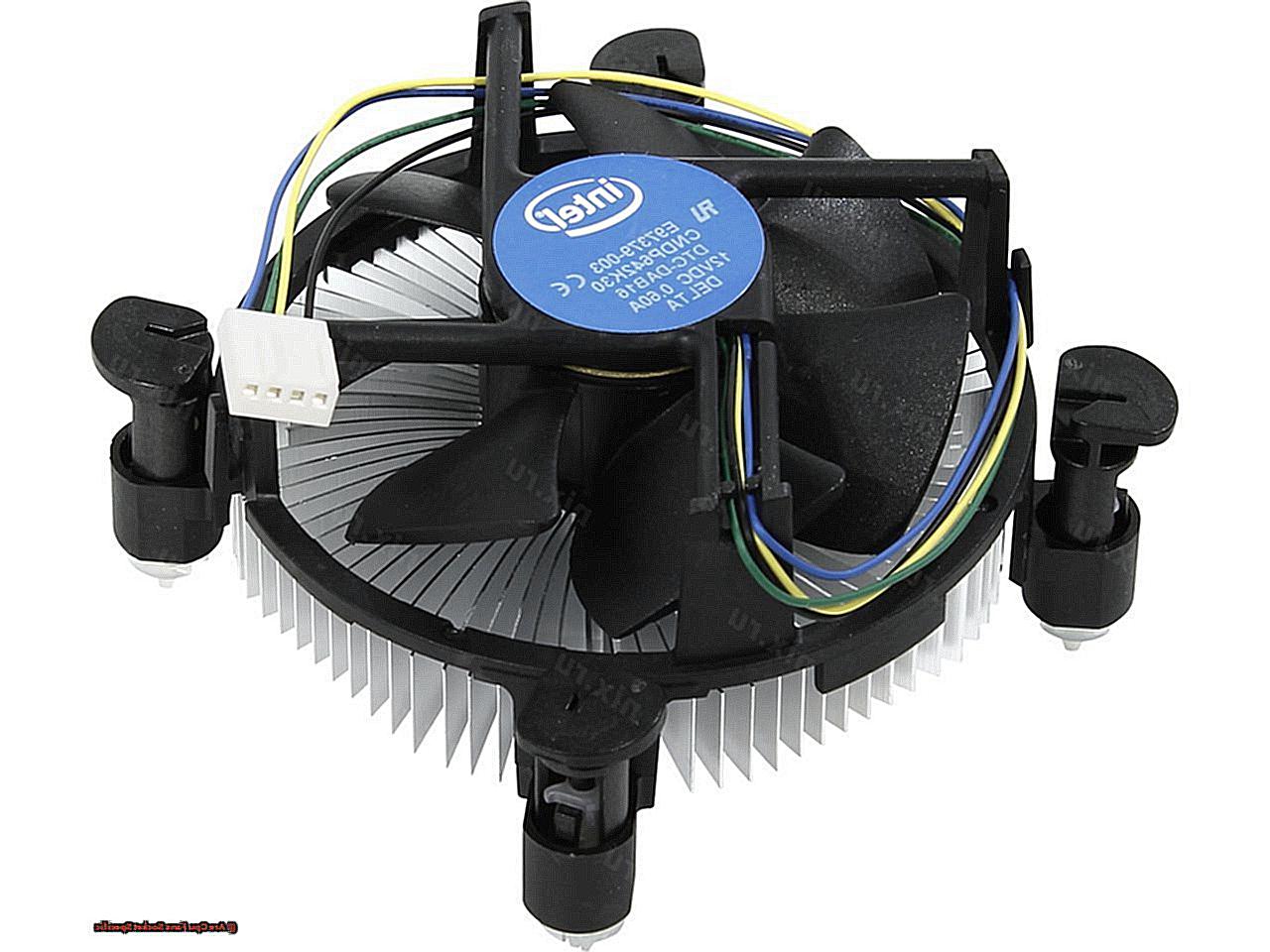
Are you gearing up to build or upgrade your computer? Have you ever pondered the intriguing question of whether CPU fans are socket specific?
Well, fear not, my friends, because you’re definitely not alone in this quest for knowledge. It’s a common query that frequently crops up in the vast realm of computer hardware.
We all understand that the CPU serves as the mighty brain of our beloved machines, and ensuring its coolness is absolutely vital for achieving peak performance. But how can we determine if a particular CPU fan is compatible with our motherboard’s socket?
So whether you’re a rookie builder or a seasoned PC guru, sit back and prepare to unravel the answer to this burning question.
Are CPU fans socket specific
Contents
- 1 Are CPU fans socket specific
- 2 The Importance of Matching CPU Fans to Socket Types
- 3 Exploring Different CPU Socket Types: LGA and PGA
- 4 How Socket Specificity Ensures Proper Alignment and Contact
- 5 The Consequences of Using Incompatible CPU Fans
- 6 Determining Your CPU Socket Type: Where to Find the Information
- 7 Compatibility Options: CPU Fans for Multiple Socket Types
- 8 The Role of Mounting Mechanisms and Brackets in Socket Specificity
- 9 Potential Risks and Damage from Incompatible CPU Fan Installation
- 10 Conclusion
If you’re building or upgrading a computer, you may have come across the question of whether CPU fans are socket specific. The short answer is yes, CPU fans are designed to be compatible with specific CPU sockets. In this article, we will explore why CPU fans need to be socket specific and provide some tips on choosing the right fan for your system.
Why are CPU fans socket specific?
The main reason why CPU fans are socket specific is because of the mounting mechanism. The fan needs to be securely attached to the CPU to effectively cool it down, and this requires a compatible mounting mechanism. Each CPU socket has a specific set of dimensions and pin configuration, and the fan must be designed to match these specifications. If a fan is not compatible with a particular CPU socket, it will not fit properly and may not provide adequate cooling or even cause damage to the CPU.
How to choose a compatible CPU fan?
When choosing a CPU fan, it’s important to consider the socket type of your motherboard and ensure compatibility. Here are some steps to follow:
- Identify your motherboard’s socket type: Check your motherboard’s manual or visit the manufacturer’s website to find out the socket type. Common socket types include Intel’s LGA (Land Grid Array) and AMD’s PGA (Pin Grid Array).
- Check the fan’s compatibility: Look for information in the product specifications provided by the fan manufacturer. They should indicate which socket types the fan is compatible with.
- Consider multiple versions of a socket type: Sometimes, there may be different versions or revisions of a particular socket type. Make sure that the fan is compatible with the specific version of the socket you are using.
It’s worth noting that some CPU fans may be compatible with multiple socket types. These fans often come with different mounting brackets or adapters that allow them to be used with various sockets. However, it’s always recommended to double-check the compatibility before making a purchase to avoid any compatibility issues.
The Importance of Matching CPU Fans to Socket Types
Your computer is running smoothly, but suddenly it starts overheating, causing it to slow down and even crash. What could be the culprit? One possibility is an incompatible CPU fan. In this blog post, we will explore the importance of matching CPU fans to socket types and why it is crucial for optimal cooling performance and the longevity of your computer.
Understanding the Role of the CPU Fan:
The CPU fan is like the superhero of your computer’s cooling system, tirelessly working to keep your processor cool. It consists of a fan and a heatsink that work together to dissipate heat generated by the CPU. Without a properly functioning CPU fan, your computer’s performance can suffer, and you may even risk permanent damage to your processor.
Socket Types
The Key to Compatibility:
Just like puzzle pieces, CPU fans and sockets need to fit together perfectly. Socket types refer to the physical interface between the CPU and the motherboard. Each socket has unique dimensions and pin arrangements, meaning that not all CPU fans will fit all sockets. Installing an incompatible fan can lead to inadequate cooling, reduced performance, or even irreversible damage.
Checking Compatibility:
Before purchasing a CPU fan, it is essential to check the manufacturer’s specifications and compatibility list to ensure it supports your socket type. Some fans are designed to be compatible with multiple socket types, offering flexibility for future upgrades. Remember, taking a few minutes to double-check compatibility can save you from headaches down the line.
Proper Installation and Mounting:
Matching the CPU fan to the correct socket type ensures a secure and stable connection between the fan and the CPU. Most fans come with installation brackets or clips specifically designed for a particular socket type. Proper installation prevents loose connections that could potentially damage your hardware.
Optimizing Cooling Performance:
Matching the CPU fan to the correct socket type is not just about installation; it also plays a significant role in maximizing cooling performance. The design of the heatsink and fan assembly is often tailored to fit a specific socket type, allowing for efficient heat transfer and dissipation. This leads to lower CPU temperatures, improved performance, and a longer lifespan for your processor.
Exploring Different CPU Socket Types: LGA and PGA
If you’ve ever opened up a computer and looked at the motherboard, you might have noticed a peculiar square-shaped socket where the processor sits. This is known as the CPU socket, a vital component that connects the processor to the motherboard. In this article, we’ll delve into the differences between two common CPU socket types: LGA (Land Grid Array) and PGA (Pin Grid Array). We’ll explore their advantages, considerations, and how they impact compatibility with CPU fans.
LGA: Easy Installation and Secure Fit
LGA sockets, developed by Intel, have their pins located on the motherboard rather than on the CPU itself. This unique design makes installing and removing CPUs easier and less risky. With LGA, you don’t have to worry about accidentally bending or damaging delicate pins. The processor has flat contacts on its underside that connect with the pins on the socket. Additionally, LGA sockets often come with a locking mechanism that ensures a secure fit for the processor.
PGA: Flexibility for Upgrades
PGA sockets are used by both Intel and AMD processors. In PGA sockets, the pins are located on the CPU instead of the motherboard. This design allows for more flexibility when it comes to upgrading or replacing CPUs. With PGA, you can remove and replace individual processors without needing to replace the entire motherboard. This feature is particularly beneficial for users who frequently upgrade their CPUs or need to replace a faulty processor.
Advantages of LGA: Higher Data Transfer Rates
LGA sockets typically have more pins than PGA sockets, providing a larger number of electrical connections. This translates to higher data transfer rates between the processor and other components of the computer system. If you’re looking for faster performance and improved efficiency, LGA sockets might be the way to go.
Advantages of PGA: Cost-Effective Solution
PGA sockets tend to have fewer pins compared to LGA sockets. While this might seem like a disadvantage at first, it actually makes PGA a cost-effective solution. The reduced number of pins means that PGA processors are generally more affordable compared to their LGA counterparts.
Compatibility with CPU Fans: Different Mounting Mechanisms
Both LGA and PGA sockets have specific requirements when it comes to CPU fan compatibility. LGA CPU fans typically use a bracket or retention module that attaches to the socket itself, ensuring a secure fit. On the other hand, PGA CPU fans often come with a clip or lever mechanism that attaches directly to the socket’s frame. It is crucial to check the compatibility information provided by the manufacturer before purchasing a CPU fan to ensure it matches your socket type.
How Socket Specificity Ensures Proper Alignment and Contact
In this article, we will explore how socket specificity guarantees efficient cooling and optimal performance by discussing the significance of physical alignment, contact, and electrical connectivity. So, let’s dive right in.
Understanding Socket Specificity:
Socket specificity refers to the design and compatibility of CPU fan sockets with specific types of processors. Each CPU socket is designed for a particular type of processor, and the CPU fan must be compatible with that specific socket. This ensures a perfect fit and allows for efficient heat transfer.
Physical Alignment:
Proper physical alignment is crucial for effective cooling. Different manufacturers use different socket designs, such as Intel’s LGA sockets or AMD’s PGA sockets. These designs vary in size and pin configurations. Therefore, choosing a CPU fan that matches your processor’s socket ensures that the fan sits directly on top of the processor, facilitating optimal heat dissipation.
Contact for Efficient Heat Transfer:
In addition to alignment, proper contact between the CPU fan and the processor is essential for efficient heat transfer. The heat sink, a finned metal structure on the fan, absorbs heat from the processor. It is designed to match the shape and size of the CPU socket, allowing it to sit tightly on top of the processor. This close contact promotes effective heat transfer from the processor to the heat sink, preventing overheating.
Electrical Connectivity:
Socket specificity also plays a vital role in establishing electrical connections between the processor and other system components. The pins on the bottom of a CPU connect with corresponding pins in the socket, enabling data transfer between the processor and other parts of the system. The CPU fan relies on these connections for power supply and communication with the motherboard for fan speed control.
The Consequences of Using Incompatible CPU Fans
In this blog post, we will explore the risks associated with mismatched cooling solutions and shed light on why choosing the right fan for your processor is essential. So, let’s dive in and uncover the dangers you need to be aware of.
Overheating: A Recipe for Disaster
- Incompatible CPU fans can lead to inadequate heat dissipation, causing your processor to overheat.
- Overheating can result in decreased processing power, slower performance, and even abrupt system shutdowns to prevent damage.
Decreased Performance and System Instability
- When a CPU fan fails to effectively cool the processor, it can cause the CPU to throttle its performance.
- Reduced processing power leads to slower overall performance and hampers your computer’s ability to handle demanding tasks.
- Incompatibility issues can also stress other components like the motherboard and RAM, leading to system instability and frequent crashes.
Excessive Noise: A Major Disturbance
- Incompatible fans may not fit snugly or securely, resulting in vibrations and rattling noises.
- This excessive noise can be distracting, annoying, and impact your ability to concentrate during critical tasks or in quiet environments.
Warranty Voiding: A Costly Mistake
- Manufacturers typically recommend using approved and compatible components for optimal performance.
- Choosing an incompatible fan may void any warranties or support services you have with the manufacturer.
- You may also be held responsible for damages caused by using an incompatible fan.
Safety Risks: Protecting Your Investment
- Incompatible CPU fans can potentially damage sensitive components, leading to fires in extreme cases.
- It is crucial to ensure that your cooling solution is specifically designed for your CPU socket to avoid safety hazards.
Determining Your CPU Socket Type: Where to Find the Information
Choosing the right CPU fan for your system is crucial to ensure optimal performance, stability, and safety. One key piece of information you need is the socket type of your CPU. In this comprehensive guide, we will explore various methods to determine your CPU socket type and where to find the necessary information.
Method 1: Check Your Computer’s Documentation or Manual
- Refer to your computer’s documentation or manual.
- Look for a section that provides specifications or technical details about your motherboard or processor.
- The CPU socket type information should be listed here.
Method 2: Visit the Manufacturer’s Website
- Go to the manufacturer’s website of your motherboard.
- Look for a support section or search for your specific model.
- Detailed specifications, including the CPU socket type, are often provided.
Method 3: Utilize Third-Party Websites
- Visit third-party websites that provide information about different CPU socket types.
- Search for your specific CPU model or motherboard model on these websites.
- These websites often have databases or lists with detailed specifications.
Method 4: Use CPU-Z Software
- Download and install the free utility software called CPU-Z.
- Run CPU-Z and navigate to the “CPU” tab.
- Look for information such as the processor name, package, and socket.
- The socket information displayed here will help you determine compatibility.
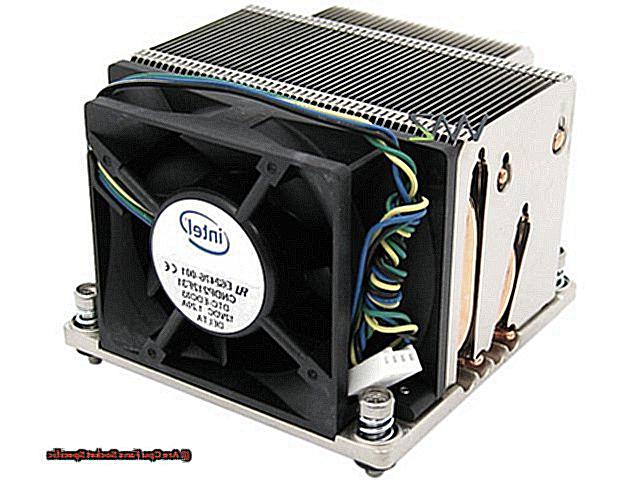
Compatibility Options: CPU Fans for Multiple Socket Types
If so, it’s important to understand that not all CPU fans are compatible with every socket type. The socket type refers to the physical layout and electrical connections of the processor and motherboard. In this article, we will explore the different options available for CPU fans to accommodate multiple socket types, ensuring you find the perfect match for your computer system.
The Two Main Types of CPU Fans:
When it comes to compatibility, there are two main types of CPU fans: stock coolers and aftermarket coolers. Stock coolers are typically provided by the processor manufacturer and are designed specifically for certain socket types. On the other hand, aftermarket coolers are manufactured by third-party companies and offer a wider range of compatibility options.
Aftermarket Coolers with Multiple Mounting Brackets or Adapters:
Many aftermarket coolers come with multiple mounting brackets or adapters that allow them to be compatible with various socket types. These brackets or adapters can be easily swapped out to fit different motherboards. Some manufacturers even provide compatibility charts or online tools that help users determine which CPU fans are suitable for their specific socket type.
Universal Mounting Systems:
Some CPU coolers may have a universal mounting system that supports multiple socket types right out of the box. These coolers usually come with a versatile mounting mechanism that can be adjusted to fit different sockets without requiring additional brackets or adapters. However, it is still crucial to verify the compatibility of these coolers with your specific socket type before making a purchase.
Consider Thermal Specifications and Power Requirements:
While some CPU fans may be compatible with multiple socket types, it’s important to consider the thermal specifications and power requirements of your particular socket. Different sockets have different thermal and power requirements, so a CPU fan that works well on one socket may not provide optimal cooling on another. Make sure to match the thermal specifications and power requirements of your socket with the CPU fan you choose.
Double-Check Compatibility:
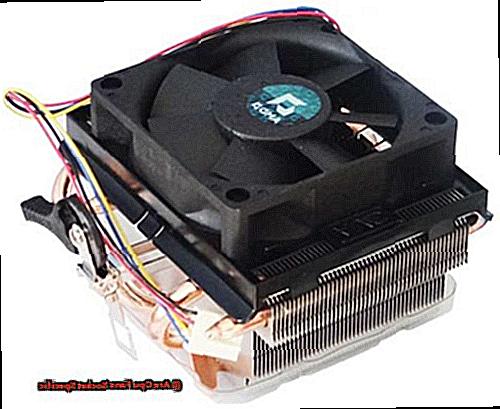
Even within a specific socket type, there can be variations in the mounting mechanism or other specifications. For example, within the LGA1151 socket type, there are multiple versions such as LGA1151v1 and LGA1151v2, each requiring different cooler specifications. Therefore, it is crucial to double-check the compatibility of the CPU fan with your specific socket type and version.
The Role of Mounting Mechanisms and Brackets in Socket Specificity
When it comes to choosing a CPU fan, finding the perfect match for your system is crucial. In this blog post, we will explore the importance of mounting mechanisms and brackets in determining the socket specificity of CPU fans. These components not only ensure a secure fit but also contribute to efficient heat dissipation and optimal performance.
Understanding Socket Specificity:
- Different CPU sockets have varying layouts and dimensions, requiring specific mounting mechanisms.
- Intel’s LGA (Land Grid Array) and AMD’s PGA (Pin Grid Array) sockets are common examples.
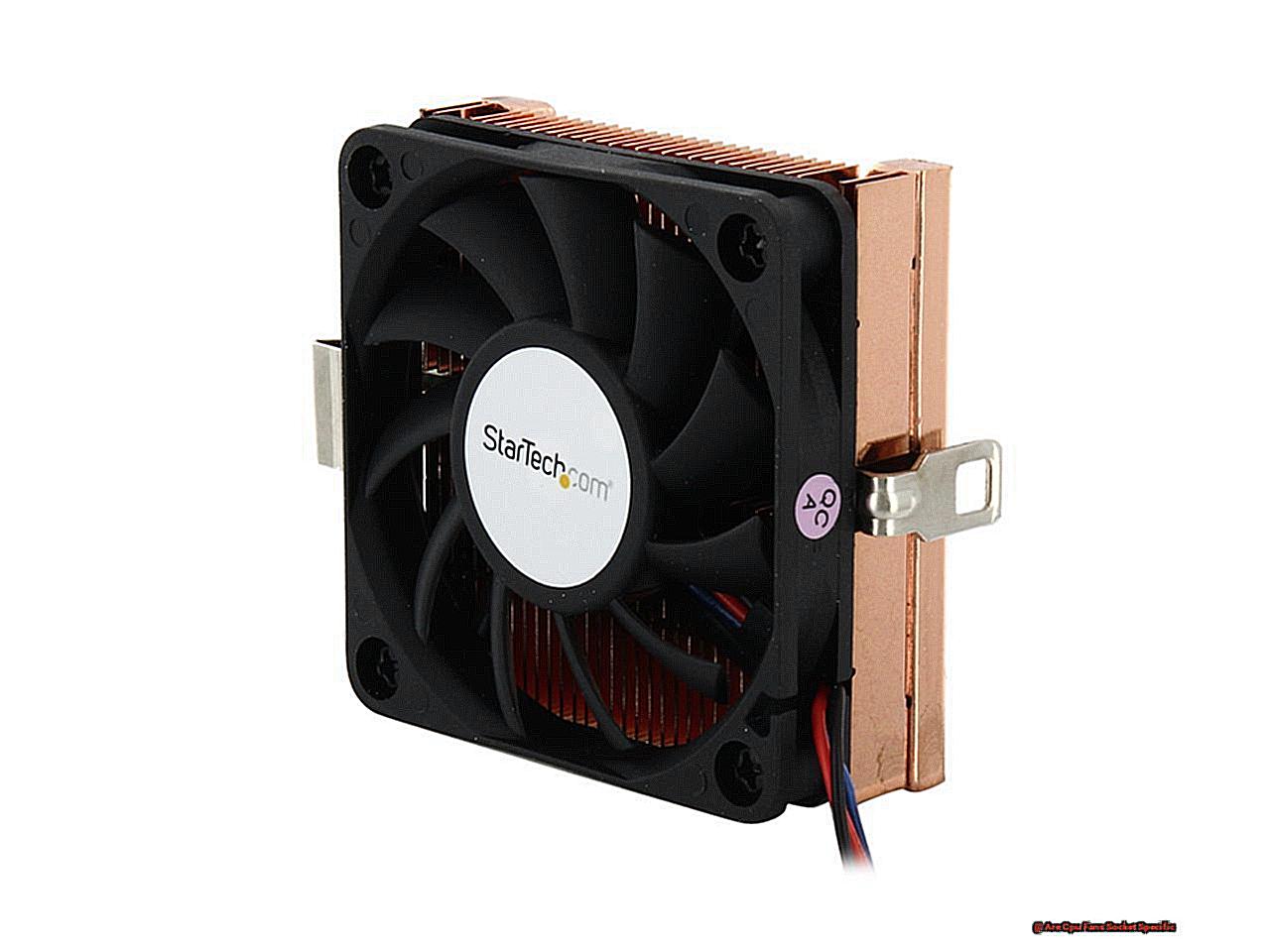
The Role of Mounting Mechanisms:
- Consists of a backplate, screws, and brackets.
- The backplate distributes weight evenly across the motherboard.
- Screws secure the fan onto the backplate.
- Brackets provide additional stability by firmly holding the fan in place.
Customized Brackets for Socket Compatibility:
- Brackets are designed to match hole patterns on the motherboard specific to a particular socket type.
- Example: An LGA 1151 bracket aligns with corresponding holes on an LGA 1151 motherboard.
Versatility for Upgrades:
- Some CPU fans come with multiple sets of brackets to accommodate different socket types.
- This allows users to switch between CPUs or upgrade their systems without needing a new fan.
- Check compatibility and available bracket options before purchasing a CPU fan.
Stability and Performance:
- Secure attachment reduces vibrations or movement that could damage the CPU or affect cooling performance.
- Maintains consistent contact between the fan and CPU for efficient heat transfer.
Conclusion:
Choosing the right CPU fan involves considering mounting mechanisms and brackets for socket specificity. These components ensure a secure fit, efficient heat dissipation, and optimal performance.
Brackets are designed to match specific hole patterns on the motherboard, offering compatibility with different socket types. When selecting a CPU fan, it’s essential to consider the mounting mechanism and ensure compatibility with your specific socket type.
So take your time, do your research, and find that perfect CPU fan that will keep your system running smoothly and silently like a well-oiled machine.
Potential Risks and Damage from Incompatible CPU Fan Installation
However, when it comes to CPU fan installation, it’s easy to overlook the potential risks and damages that can arise from using an incompatible fan. In this article, we’ll explore the various dangers of such an installation and provide you with expert advice on how to protect your system.
Inadequate Cooling:
Installing an incompatible CPU fan can lead to inadequate cooling, causing the CPU to overheat. Without proper dissipation of heat, the CPU can reach dangerous temperatures, triggering thermal throttling. This automatic reduction in performance prevents damage but negatively impacts system speed.
Increased Noise Levels:
Different CPU fans have varying noise levels. An incompatible fan may result in a louder operation, disrupting your computing experience. Ensuring compatibility helps maintain a quieter environment for those who value peace and tranquility.
Physical Damage:
Incompatibility issues can cause physical damage to both the CPU and motherboard. An improperly aligned or secured fan can exert uneven pressure on the processor, potentially damaging delicate circuitry or bending pins. Additionally, an obstructive or oversized fan may come into contact with other components, leading to damage or short circuits.
Voided Manufacturer’s Warranty:
Using an incompatible CPU fan may void your manufacturer’s warranty. Unauthorized modifications like this can render the warranty null and void, leaving you solely responsible for any repairs or replacements required.
Compatibility Issues:
Installing an incompatible CPU fan may cause compatibility issues with other system components. If the fan’s power connector is not compatible with the motherboard’s fan header, it may not function correctly or at all. This can result in instability issues or system failures.
Conclusion
In conclusion, it is important to note that CPU fans are indeed socket specific.
This means that you cannot simply install any fan onto any socket without considering compatibility. Each CPU socket has its own unique design and layout, and the corresponding fan must match these specifications in order to function properly.
Attempting to use an incompatible fan can lead to a variety of issues, such as overheating or damage to the CPU itself. Therefore, it is crucial to carefully research and select a CPU fan that is specifically designed for your particular socket type.

